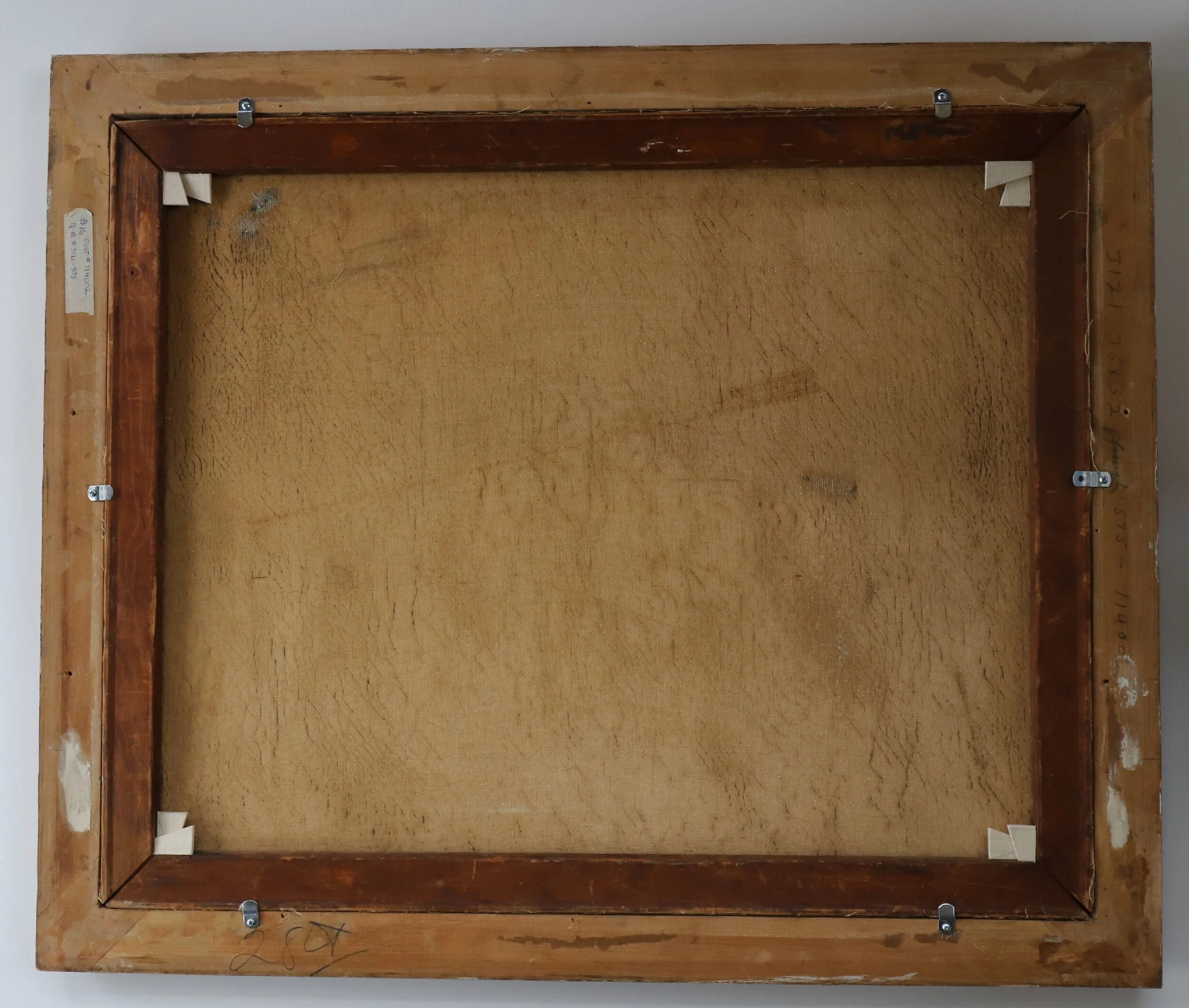John Farrar (American, 1928-1972) “Pardner”, 1943
John Farrar (American, 1928-1972) “Pardner”, 1943
John Farrar (American, 1928-1972)
“ Pardner ”, 1943
Titled Above Signature (Lower, Left)
Oil on Canvas
26 ⅛” x 32 ⅛”
Housed in a 2 ½” period ornamented Newcomb-Macklin frame in toned gold leaf, in good original condition.
Outside Size: 30 1/2" x 36 5/8"
A recent discovery of a painting that appears to be Farrar’s family dog. This was done when he was just sixteen years old.
In 1942, Farrar won the Washington Times-Herald's outdoor art fair. This painting was executed the following year when he was 15 (1943). That same year he won the top prize at Atlanta University’s third annual “ Exhibition of Paintings, Sculpture and Prints by Negro Artists ” with a piece titled “ Queenie ”. Approximately one hundred and fifty works of art were included in the show, representing the best works of more than seventy-five contemporary African American artists. This show included works by Romare Bearden, who was awarded Honorable Mention for his painting “ The Two Genrerations ”. Also included among the exhibitors - Charles H. Alston, Allen Rohen Crite, Aaron Douglas, Fredrick Flemister, Sargant Johnson, Horace Pippin, Jacob Lawrence, Marjorie Wheeler Brown, Hughie Lee Smith, Lois Mailou Jones, James A. Porter, Obleton Haris, Robert N. Gardner, Ernest Crichlow, Henry Bannarn and William Edmonson.
Biography:
As a teenager in the 1940s, Farrar received much local acclaim in the Washington D.C. art Scene. Words like “Child Prodigy”, “Brilliant” and “Gifted” were used to describe him in the local newspaper. He had a great bout of early success which included developing patrons among Washington DC’s art elite but this was short lived as he was afflicted with schizophrenia and alcoholism as an adult causing him to spend much of his life in mental institutions.








